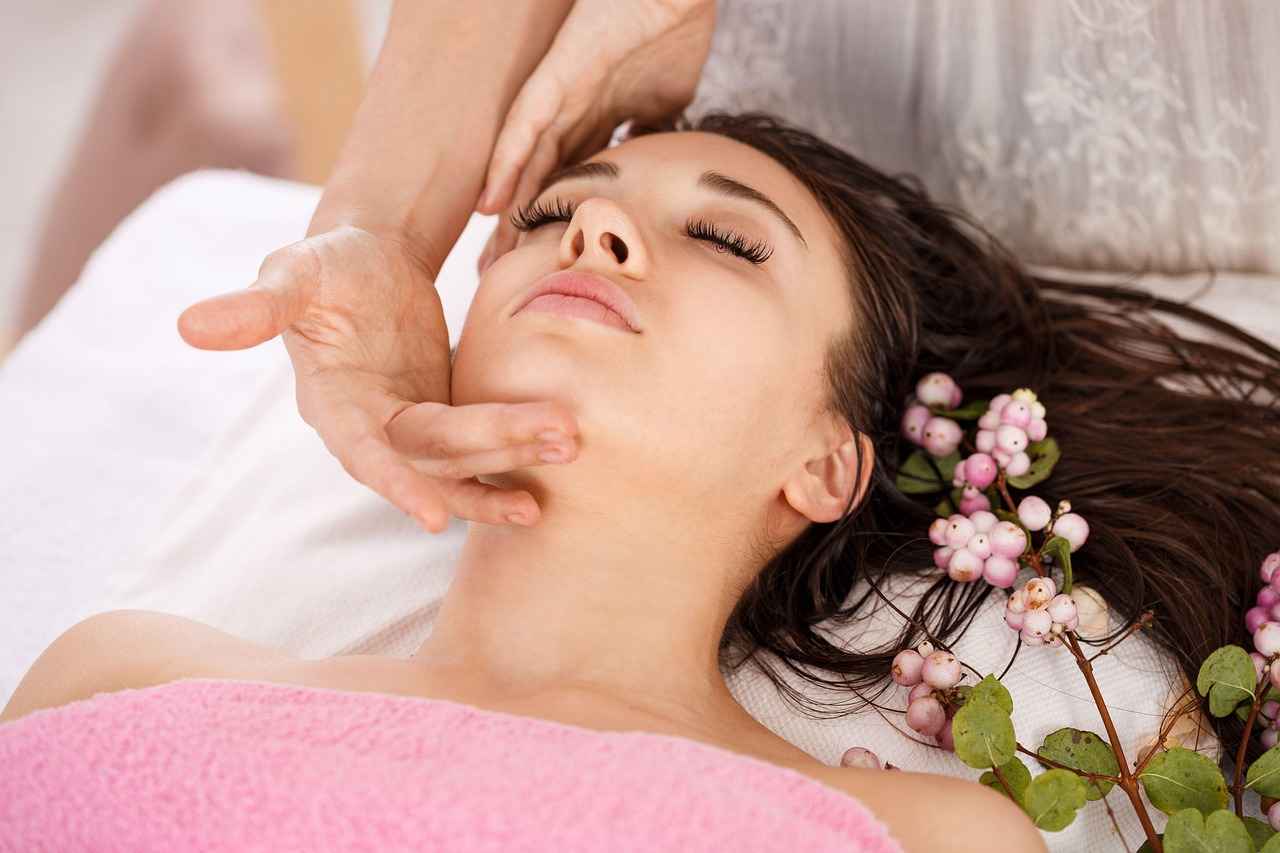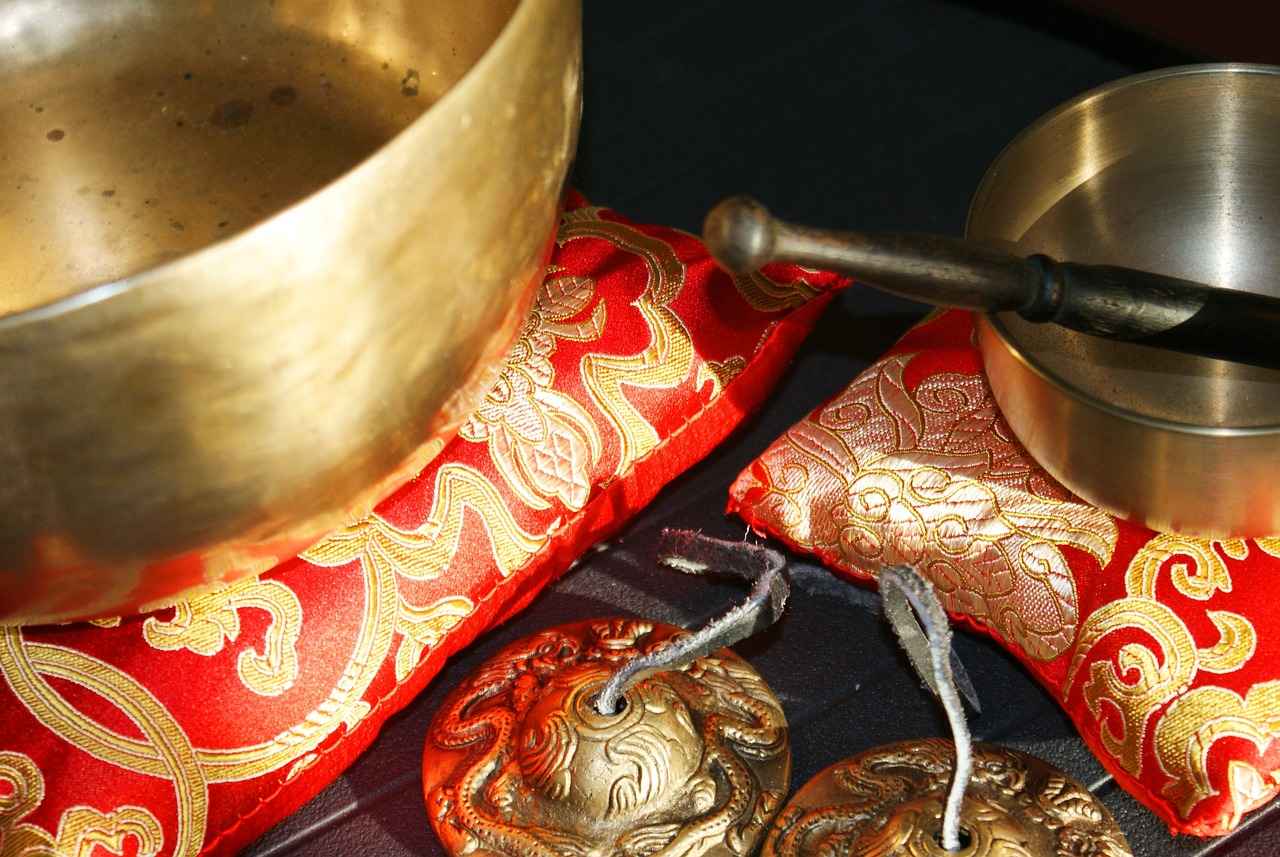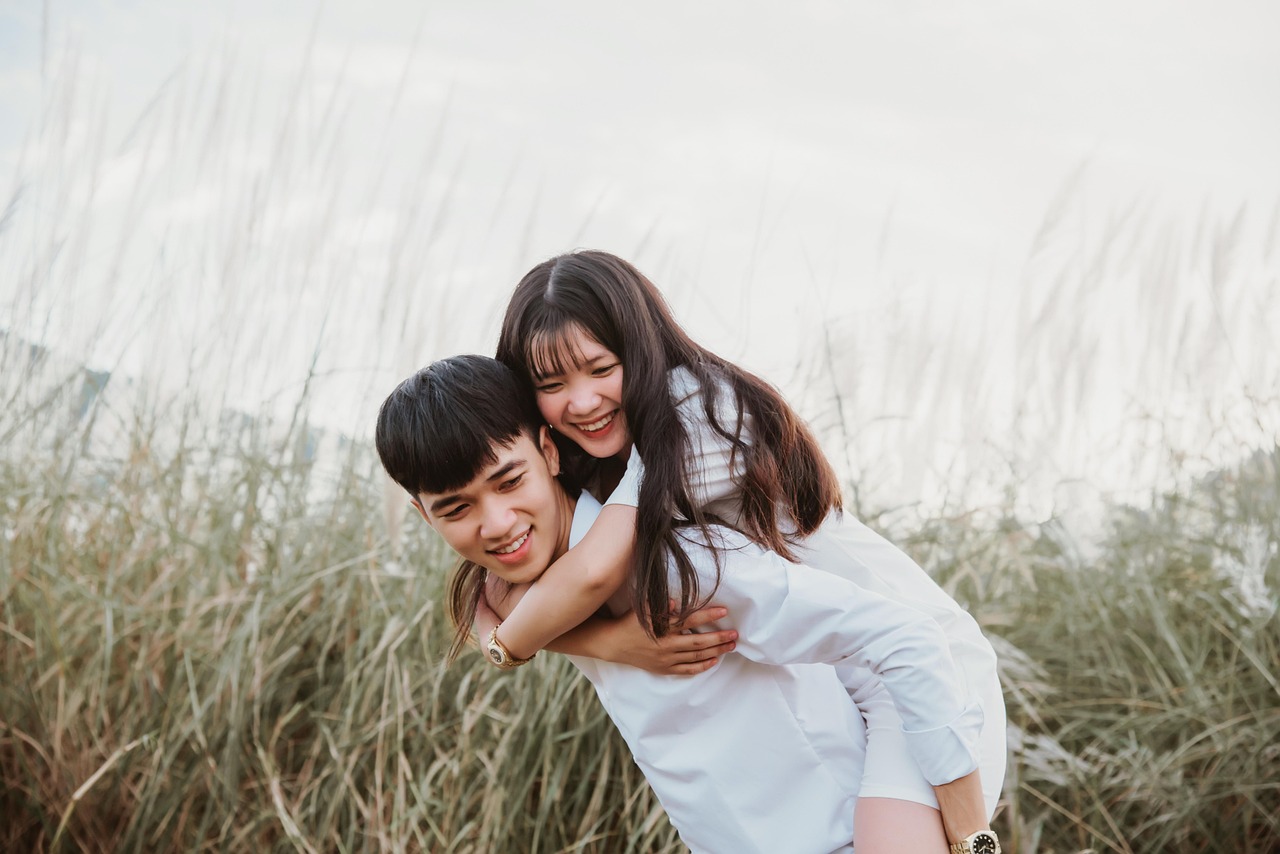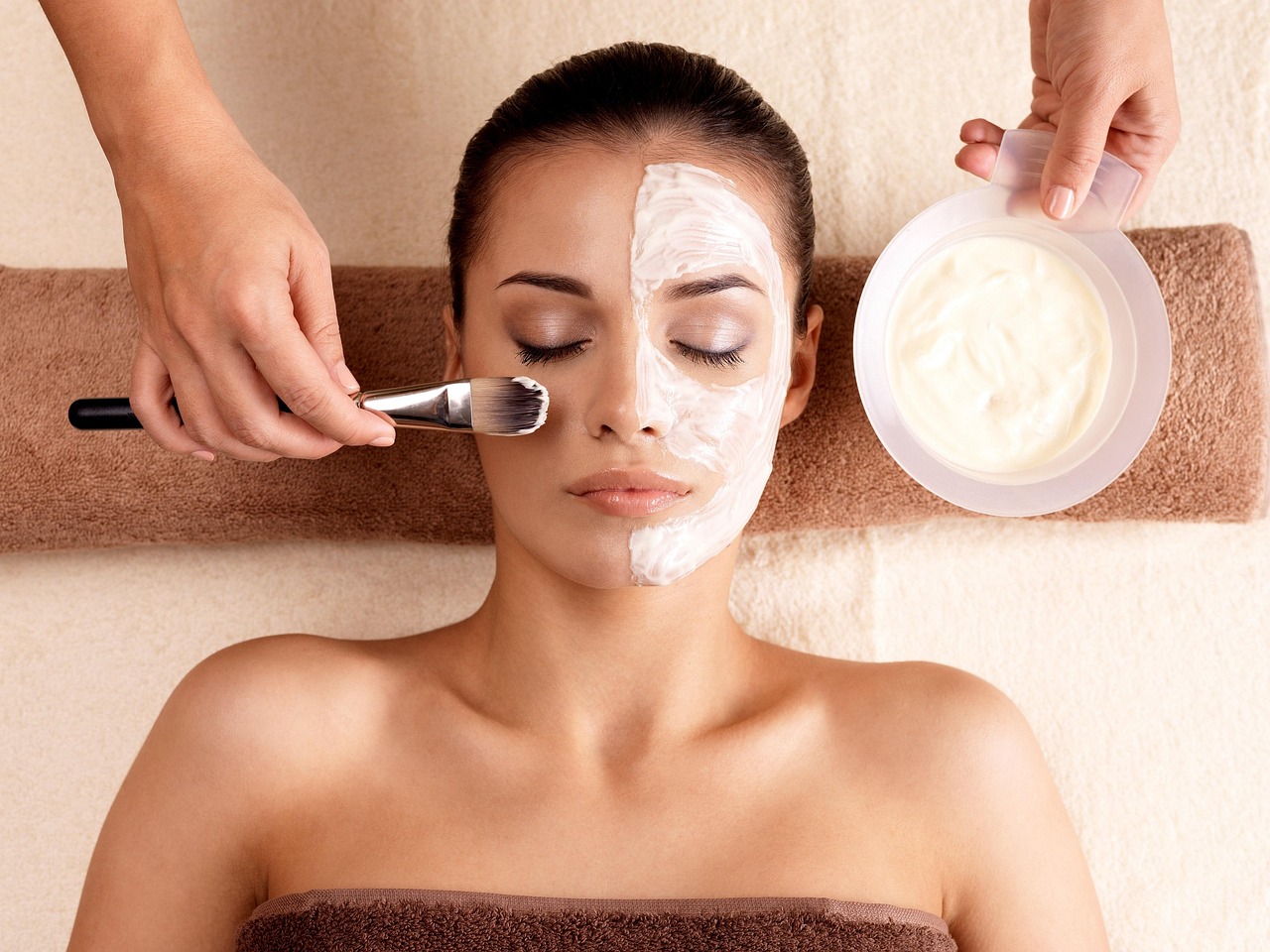This article explores the various techniques and benefits of Asian massages, delving into their historical context, scientific principles, and practical applications for enhancing relaxation and well-being. Asian massages are not just methods of physical therapy; they are holistic practices that integrate body, mind, and spirit, fostering a deep sense of tranquility.
The Historical Roots of Asian Massage
Asian massage techniques have rich historical backgrounds that reflect their cultural significance. Originating thousands of years ago, practices like Shiatsu from Japan, Thai massage, and Tui Na from China have evolved through the ages. Understanding these origins provides insight into how these techniques have influenced modern wellness practices and continue to be relevant today.
Different Types of Asian Massage Techniques
- Shiatsu: Based on traditional Chinese medicine, it uses finger pressure to stimulate energy flow.
- Thai Massage: Combines acupressure and yoga-like stretches to enhance flexibility and reduce muscle tension.
- Tui Na: Focuses on deep tissue manipulation and is often used in conjunction with acupuncture.
Spa and Wellness Centers Offering Asian Massages
Many spas and wellness centers specialize in Asian massages, creating serene environments where skilled practitioners can enhance the relaxation experience. These centers often provide tailored services to meet individual needs, ensuring a personalized approach to wellness.
Choosing the Right Spa for Your Needs
Selecting the right spa is essential for maximizing the benefits of Asian massages. Consider factors such as ambiance, services offered, and therapist qualifications to find a place that aligns with your preferences.
What to Expect During Your First Session
If you’re new to Asian massages, knowing what to expect can help ease any anxiety. Typically, a session begins with a consultation to understand your needs, followed by a tailored massage experience that focuses on specific areas of tension.
Benefits of Asian Massage Techniques
Asian massages offer numerous physical and mental health benefits. They can provide significant stress relief, improve circulation, and enhance flexibility. Regular sessions can be a valuable addition to your wellness routine, promoting overall health and relaxation.
The Science Behind Relaxation and Stress Relief
Understanding the physiological and psychological mechanisms behind relaxation during Asian massages can enhance appreciation for their effects. Research shows that these techniques can lower cortisol levels, leading to reduced stress and improved mood.
The Role of Touch in Healing
Touch is a fundamental aspect of Asian massage, promoting relaxation and emotional connection. Studies reveal that positive touch can influence the body’s stress response and enhance healing processes.
Neuroscience of Relaxation
Recent neuroscience research indicates that massages activate specific brain regions, leading to decreased anxiety and improved emotional well-being. This scientific understanding can deepen one’s appreciation for the practice of Asian massage.
Incorporating Asian Massage into Your Wellness Routine
Integrating Asian massage into your regular self-care regimen can yield lasting benefits. Consider how often you should receive massages and the best times for scheduling them to maximize their effectiveness.
Frequency and Timing for Optimal Benefits
Determining the right frequency of massages can significantly impact their effectiveness. Regular sessions, whether weekly or monthly, can help maintain relaxation and promote overall wellness.
Complementary Practices to Enhance Effectiveness
Combining Asian massage with other relaxation techniques, such as meditation or yoga, can amplify its benefits and promote a holistic approach to wellness. This integrative strategy can lead to a more profound sense of relaxation and rejuvenation.

The Historical Roots of Asian Massage
Asian massage techniques have a rich and diverse history that dates back thousands of years. These practices are deeply intertwined with the cultural and spiritual beliefs of various Asian societies, reflecting the holistic approach to health and wellness that is prevalent in many Eastern philosophies.
One of the earliest forms of massage can be traced back to ancient China, where it was documented in texts such as the Huangdi Neijing (The Yellow Emperor’s Classic of Internal Medicine). This foundational text emphasizes the importance of balancing the body’s energy, or Qi, through various techniques, including massage, to promote health and prevent disease.
Similarly, traditional Indian practices, particularly Ayurveda, incorporate massage as a vital component of holistic health. Ayurvedic massage focuses on harmonizing the body’s energies through specific techniques and the use of herbal oils, which have been refined over centuries.
In Japan, the practice of Shiatsu emerged in the early 20th century, drawing from both Chinese and Western medical principles. Shiatsu, meaning “finger pressure,” utilizes various techniques to apply pressure on specific points along the body’s meridians, promoting relaxation and healing.
Thai massage, another prominent technique, combines acupressure, yoga-like stretching, and energy work. It is believed to have originated from ancient healing traditions influenced by Indian and Chinese practices, evolving into a unique form that emphasizes energy flow and flexibility.
These historical roots reveal that Asian massage is not merely a physical practice but a profound cultural expression that has evolved over centuries. The techniques developed through these traditions have significantly influenced modern wellness practices, highlighting their enduring relevance in today’s health-conscious society.
As we explore the various techniques and benefits of Asian massages, it is essential to appreciate their historical significance and the cultural wisdom they embody. Understanding this context not only enriches the experience of receiving a massage but also enhances our overall appreciation for these time-honored practices.

Different Types of Asian Massage Techniques
Asian massage encompasses a rich tapestry of techniques, each offering unique methods and benefits tailored to individual needs. This section will delve into three of the most renowned styles: Shiatsu, Thai, and Tui Na, highlighting their distinctive approaches and therapeutic advantages.
- Shiatsu: Originating from Japan, Shiatsu translates to “finger pressure.” This technique employs rhythmic pressure applied to specific points on the body, known as acupressure points. By balancing the body’s energy, or Qi, Shiatsu aims to alleviate stress, enhance relaxation, and promote overall well-being. Practitioners often use their fingers, palms, and even elbows to apply pressure, creating a deeply restorative experience.
- Thai Massage: Known for its dynamic and energetic approach, Thai massage combines acupressure with yoga-like stretching. This ancient practice encourages flexibility and circulation while releasing muscle tension. The therapist uses their body weight to guide clients through various positions, creating a meditative and revitalizing experience. This technique not only relieves physical discomfort but also fosters mental clarity and emotional balance.
- Tui Na: A traditional Chinese therapeutic massage, Tui Na focuses on stimulating the body’s energy pathways, or meridians. This method integrates a variety of hand techniques, including rolling, kneading, and pressing, to address specific health concerns. Tui Na is often used in conjunction with acupuncture and herbal medicine, making it a holistic approach to healing. It is particularly effective for treating musculoskeletal issues, promoting relaxation, and enhancing the body’s natural healing processes.
Each of these techniques offers a unique pathway to relaxation and healing, allowing individuals to choose a style that resonates with their personal wellness goals. Whether seeking relief from stress, enhancing flexibility, or addressing specific physical ailments, Asian massage techniques provide a comprehensive approach to overall health.
Spa and Wellness Centers Offering Asian Massages
Asian massages have become increasingly popular in recent years, with many spas and wellness centers dedicating themselves to this ancient practice. These establishments create a tranquil atmosphere that enhances the overall relaxation experience, allowing clients to escape the stresses of daily life. The skilled practitioners at these centers are trained in various techniques, ensuring that each session is tailored to meet individual needs.
When you step into a wellness center specializing in Asian massages, you are often greeted by soothing music and calming scents, which play a vital role in creating a peaceful environment. Many spas incorporate elements of traditional Asian decor, such as bamboo, water features, and soft lighting, further enhancing the ambiance. This serene setting is essential for promoting relaxation and mental clarity.
Popular Asian massage techniques offered at these centers include Shiatsu, Thai massage, and Tui Na. Each of these methods has unique benefits and approaches, focusing on different aspects of physical and mental well-being. For instance, Shiatsu uses finger pressure on specific points to relieve tension, while Thai massage incorporates yoga-like stretches to enhance flexibility and circulation.
Choosing the right spa is crucial for maximizing the benefits of your massage experience. Consider factors such as the qualifications of the therapists, the range of services offered, and the overall environment. Reading reviews and seeking recommendations can also help in making an informed decision.
For those new to Asian massages, understanding what to expect can alleviate any apprehensions. Sessions typically begin with a consultation to discuss your specific needs and preferences, allowing the therapist to tailor the experience accordingly. Whether you seek relaxation, pain relief, or improved mobility, a skilled practitioner will guide you through the process, ensuring a rewarding experience.
In summary, spas and wellness centers specializing in Asian massages provide a unique and enriching experience. With their tranquil environments and skilled practitioners, these establishments are dedicated to enhancing relaxation and well-being for all clients.
Choosing the Right Spa for Your Needs
When it comes to experiencing the full benefits of Asian massages, selecting the right spa is essential. The atmosphere, services provided, and qualifications of the therapists play a significant role in your overall experience. Here are some key factors to consider:
- Ambiance: The environment of the spa should promote relaxation. Look for spaces that are tranquil, clean, and decorated in a way that reflects the cultural roots of the massage techniques being offered. Soft lighting, soothing music, and aromatic scents can enhance your experience.
- Services Offered: Different spas may specialize in various types of Asian massages such as Shiatsu, Thai, or Tui Na. Research the specific services available and choose a spa that aligns with your preferences. Some spas may also offer complementary treatments like acupuncture or herbal therapies.
- Therapist Qualifications: The expertise of the massage therapist is crucial for a beneficial experience. Inquire about their training, certifications, and experience with specific Asian massage techniques. A skilled therapist will tailor the session to your needs, ensuring a more effective treatment.
- Client Reviews: Reading reviews from previous clients can provide insight into the quality of service at a spa. Look for testimonials that highlight the therapist’s skill, the ambiance, and overall satisfaction.
- Pricing: While cost should not be the sole factor, it is important to find a spa that offers services within your budget. Keep in mind that higher prices often reflect better quality and experience.
By taking these factors into account, you can ensure that your spa experience enhances the benefits of Asian massages, leading to greater relaxation and well-being.
What to Expect During Your First Session
Embarking on your first Asian massage experience can be both exciting and a little nerve-wracking. Understanding what to expect during your session is essential for ensuring a relaxing and enjoyable experience. Here’s a detailed overview to help you prepare.
- Initial Consultation: Most sessions begin with a brief consultation. This is your chance to discuss any specific concerns, areas of tension, or preferences with your therapist. Open communication is key.
- Creating a Comfortable Environment: Upon entering the massage room, you will typically find a serene atmosphere, often enhanced by calming music and soft lighting. This environment is designed to help you unwind.
- Choosing Your Attire: Depending on the style of massage, you may be asked to wear loose-fitting clothing or a provided gown. For techniques like Thai massage, flexibility is crucial, so comfortable attire is encouraged.
- Understanding the Techniques: Asian massages vary widely, from the firm pressure of Shiatsu to the gentle stretches of Thai massage. Your therapist will explain the techniques they will use, helping to set your expectations.
- Bodywork Flow: During the session, the therapist will typically start with gentle strokes to warm up your muscles, gradually progressing to deeper techniques. This flow is designed to promote relaxation and relief from tension.
- Feedback is Important: Throughout the massage, don’t hesitate to communicate with your therapist. If something feels uncomfortable or if you prefer a different pressure, letting them know will enhance your experience.
- Post-Massage Care: After the session, your therapist may offer tips on how to maintain relaxation at home. Staying hydrated and taking time to rest can help prolong the benefits of your massage.
By familiarizing yourself with these elements, you can approach your first Asian massage with confidence and ease. Embrace the journey towards relaxation and well-being, and enjoy the myriad benefits that these ancient techniques offer.
Benefits of Asian Massage Techniques
Asian massage techniques have been practiced for centuries, offering a wealth of physical and mental health benefits. These practices are not only a source of relaxation but also play a crucial role in enhancing overall well-being. Below, we explore the key benefits of incorporating Asian massages into your wellness routine.
- Stress Relief: One of the most significant advantages of Asian massages is their ability to reduce stress. Techniques such as Shiatsu and Thai massage focus on pressure points and stretching, which can help alleviate tension and promote a sense of calm.
- Improved Circulation: Asian massages stimulate blood flow, enhancing circulation throughout the body. This is particularly beneficial for individuals with sedentary lifestyles or those experiencing muscle stiffness.
- Enhanced Flexibility: Many Asian massage techniques incorporate stretching and manipulation of the muscles, which can lead to improved flexibility and range of motion. This is especially beneficial for athletes or those engaged in physical activities.
- Pain Relief: Regular sessions can help alleviate chronic pain conditions, such as lower back pain or headaches. The targeted pressure applied during massages can release muscle tension and reduce pain levels.
- Emotional Well-Being: Beyond physical benefits, Asian massages can also enhance emotional health. The practice encourages relaxation and mindfulness, which can help reduce anxiety and improve mood.
- Detoxification: Massage techniques promote lymphatic drainage, aiding in the removal of toxins from the body. This detoxifying effect can lead to improved overall health and vitality.
- Boosted Immune System: Regular massage has been linked to enhanced immune function. By reducing stress and promoting relaxation, Asian massages can help the body defend against illness.
Incorporating Asian massage techniques into your wellness routine not only provides immediate relief but also contributes to long-term health benefits. Whether you are seeking to unwind after a long day or looking to improve your physical condition, these techniques offer a holistic approach to well-being.

The Science Behind Relaxation and Stress Relief
Understanding the science behind relaxation and stress relief during Asian massages is essential for recognizing their profound impact on overall well-being. These ancient practices are not merely about physical manipulation; they engage complex physiological and psychological mechanisms that promote a state of tranquility.
At the core of relaxation lies the parasympathetic nervous system, which counteracts the stress-induced fight-or-flight response. When receiving an Asian massage, the body shifts into this restful state, lowering heart rates and reducing blood pressure. This physiological change facilitates a sense of calm and rejuvenation, allowing individuals to disconnect from daily stressors.
Moreover, the act of massage stimulates the release of endorphins and oxytocin, hormones associated with feelings of happiness and bonding. These neurochemicals play a crucial role in enhancing mood and reducing feelings of anxiety. Scientific studies have shown that regular exposure to these positive hormones can lead to long-term improvements in mental health.
In addition to hormonal changes, the power of touch cannot be underestimated. Touch is a fundamental aspect of the human experience, and it has been shown to activate specific areas of the brain responsible for emotional regulation. This activation helps to diminish the body’s stress response, allowing for deeper relaxation and emotional connection.
Furthermore, the neuroscience of relaxation reveals that massages can alter brain activity. Research indicates that massage therapy can decrease activity in the amygdala, the brain’s fear center, while enhancing activity in areas associated with calmness and emotional balance. This neurological shift can lead to a greater sense of well-being and a reduction in anxiety levels.
Incorporating Asian massage techniques into a regular wellness routine can significantly enhance these benefits. By understanding the underlying mechanisms of relaxation and stress relief, individuals can fully appreciate the transformative effects of these ancient practices on their mental and physical health.
The Role of Touch in Healing
Touch plays a crucial role in the practice of Asian massage, serving not only as a technique for physical manipulation but also as a means of fostering emotional bonds and enhancing overall well-being. The significance of touch transcends mere physical contact; it embodies a complex interplay of psychological and physiological responses that can profoundly influence the body’s ability to heal and relax.
When a skilled practitioner applies pressure through various massage techniques, the body responds by releasing endorphins, which are natural pain relievers. This biochemical reaction not only alleviates discomfort but also promotes a sense of euphoria and relaxation. Moreover, the act of touch can stimulate the parasympathetic nervous system, which is responsible for the body’s rest-and-digest functions. This activation leads to a decrease in heart rate and blood pressure, allowing individuals to experience a deep sense of calm.
Furthermore, touch has been shown to impact the body’s stress response. In moments of physical contact, the brain releases oxytocin, often referred to as the “love hormone.” This hormone plays a vital role in fostering emotional connections and reducing feelings of anxiety and stress. As a result, individuals often report feeling more connected to themselves and others after a massage session.
Scientific research supports the notion that regular exposure to therapeutic touch can enhance the body’s immune response. By reducing stress levels and promoting relaxation, the body is better equipped to fend off illness and maintain overall health. This is particularly relevant in today’s fast-paced world, where stress is a common contributor to various health issues.
In summary, the role of touch in healing is multifaceted, impacting both the mind and body. Through the application of Asian massage techniques, individuals can experience profound benefits, including stress relief, enhanced emotional well-being, and improved physical health. Understanding the science behind touch not only enriches the massage experience but also underscores its importance in holistic wellness practices.
Neuroscience of Relaxation
Understanding the is essential for appreciating the profound effects of Asian massages on both the mind and body. Recent research in neuroscience has illuminated how massages can activate specific brain regions, leading to significant reductions in anxiety and improvements in mood.
When a person receives a massage, their body responds through a complex interplay of physiological and neurological processes. Studies have shown that massage therapy can stimulate the release of endorphins, which are natural mood lifters, and serotonin, a neurotransmitter that plays a crucial role in regulating mood and anxiety levels. This biochemical response not only enhances feelings of relaxation but also promotes an overall sense of well-being.
Furthermore, massages can decrease levels of cortisol, the hormone associated with stress. High cortisol levels can lead to a range of health issues, including anxiety and depression. By reducing cortisol, massages help restore a sense of calm and balance, enabling individuals to cope better with daily stressors.
Neuroscientific studies have also identified specific brain regions activated during massage therapy. For instance, the insula and anterior cingulate cortex are involved in processing sensory information and emotional regulation. Activation of these areas during a massage can lead to enhanced emotional responses and a greater capacity for relaxation.
Moreover, the mechanical stimulation provided by massage can influence the autonomic nervous system, shifting it from a state of stress (sympathetic) to a state of relaxation (parasympathetic). This shift not only promotes relaxation but also enhances bodily functions such as digestion and circulation, further contributing to overall health.
In conclusion, the intricate relationship between massage therapy and neuroscience underscores the importance of this practice in promoting mental and physical well-being. By understanding these mechanisms, individuals can cultivate a deeper appreciation for the transformative power of Asian massages.

Incorporating Asian Massage into Your Wellness Routine
Incorporating Asian massage into your wellness routine can be a transformative experience, offering both physical and mental rejuvenation. By making this practice a regular part of your self-care regimen, you can unlock a multitude of benefits that enhance your overall well-being. Here are some practical tips to seamlessly integrate Asian massage into your life:
- Establish a Schedule: Consistency is key when it comes to reaping the benefits of massage. Aim to schedule sessions at regular intervals, such as weekly or bi-weekly, to maintain a steady flow of relaxation and healing.
- Choose the Right Technique: Different Asian massage techniques cater to various needs. Experiment with styles like Shiatsu for deep pressure, Thai for stretching, or Tui Na for energetic balance. Finding the right fit will enhance your experience.
- Create a Relaxing Environment: Set the mood at home by designating a peaceful space for self-massage or relaxation. Use calming scents, soft lighting, and soothing music to enhance your experience.
- Combine with Other Wellness Practices: To amplify the benefits, consider pairing Asian massage with practices like meditation or yoga. This holistic approach can deepen relaxation and improve your mental clarity.
- Listen to Your Body: Pay attention to how your body responds to different techniques and frequencies. Adjust your routine based on your energy levels and stressors to ensure maximum benefit.
- Seek Professional Guidance: If you’re new to Asian massage, consider consulting with a qualified practitioner. They can provide tailored advice and techniques that suit your individual needs.
By following these tips, you can effectively integrate Asian massage into your self-care routine, paving the way for lasting relaxation and rejuvenation. Remember, the journey to wellness is personal, and finding what works best for you is essential.
Frequency and Timing for Optimal Benefits
When it comes to maximizing the benefits of Asian massages, understanding the frequency and timing of your sessions is crucial. Proper scheduling not only enhances the overall experience but also significantly impacts the effectiveness of the massage, leading to greater relaxation and wellness.
Experts recommend that individuals consider their personal goals and stress levels when determining how often to book a massage. For those experiencing high levels of stress or physical discomfort, weekly sessions may be beneficial. This frequency allows the body to recover and adapt, ultimately leading to improved flexibility and reduced tension.
On the other hand, if your primary goal is to maintain general well-being, bi-weekly or monthly appointments may suffice. This schedule helps to promote relaxation and prevent the buildup of tension, making it a sustainable choice for long-term wellness.
Timing also plays a pivotal role in enhancing the benefits of your massage. Scheduling your sessions during off-peak hours can lead to a more tranquil environment, allowing you to fully immerse yourself in the experience. Many individuals find that early morning or late afternoon appointments work best, as these times can help to alleviate stress accumulated throughout the day.
Additionally, consider pairing your massage with other relaxation techniques. For instance, booking a massage after a yoga class or a meditation session can enhance the overall effects, promoting a deeper state of relaxation and emotional balance.
Ultimately, the key to maximizing the benefits of Asian massages lies in understanding your body’s needs. By thoughtfully considering both the frequency and timing of your sessions, you can create a personalized wellness routine that fosters relaxation and rejuvenation.
Complementary Practices to Enhance Effectiveness
In today’s fast-paced world, finding effective ways to relax and rejuvenate is essential for maintaining overall well-being. One of the most beneficial approaches is to incorporate Asian massage with other relaxation techniques, such as meditation and yoga. This holistic approach not only enhances the benefits of massage but also promotes a deeper sense of tranquility and balance.
Asian massage techniques, known for their therapeutic properties, focus on energy flow and muscle relaxation. By integrating practices like meditation, individuals can achieve a heightened state of awareness and mindfulness, allowing them to fully engage with the massage experience. Meditation encourages a calm mind, which can help in reducing stress levels and enhancing the overall effectiveness of the massage.
Yoga complements Asian massage by promoting flexibility and strength, which are crucial for the body’s physical health. The gentle stretches and postures in yoga can prepare the body for a massage, making it easier for the therapist to work on tense areas. Furthermore, practicing yoga regularly can help maintain the benefits gained from a massage, as it encourages ongoing body awareness and relaxation.
To maximize the effectiveness of these complementary practices, consider the following:
- Schedule Regular Sessions: Aim to combine Asian massage with yoga or meditation sessions at least once a week for optimal benefits.
- Create a Relaxing Environment: Set up a tranquil space for your yoga or meditation practice, similar to the ambiance of a massage spa.
- Focus on Breathing: Incorporate deep breathing techniques during both yoga and massage to enhance relaxation and stress relief.
- Listen to Your Body: Pay attention to your body’s signals during these practices to avoid overexertion and ensure a positive experience.
By embracing the synergy of Asian massage with meditation and yoga, individuals can cultivate a comprehensive wellness routine that nurtures both the body and mind. This holistic approach not only amplifies the benefits of each practice but also fosters a deeper connection to oneself, paving the way for a healthier, more balanced lifestyle.
Frequently Asked Questions
- What are the benefits of Asian massages?
Asian massages offer a plethora of benefits, including stress relief, improved circulation, and enhanced flexibility. They can also help alleviate muscle tension and promote overall relaxation, making them a fantastic addition to your wellness routine.
- How do I choose the right type of Asian massage?
Choosing the right type of Asian massage depends on your personal needs and preferences. For instance, if you seek deep tissue work, Shiatsu might be ideal, while those looking for a more fluid experience may enjoy Thai massage. It’s best to consult with a therapist to find what suits you best!
- What should I expect during my first massage session?
During your first session, expect a warm welcome and a brief consultation to discuss your needs. The therapist will guide you through the process, ensuring you feel comfortable. Don’t hesitate to voice any concerns or preferences!
- How often should I get an Asian massage?
For optimal benefits, many recommend scheduling a massage once a month. However, if you’re dealing with chronic stress or pain, more frequent sessions may be beneficial. Listen to your body and adjust accordingly!
- Can Asian massages be combined with other wellness practices?
Absolutely! Combining Asian massages with practices like yoga or meditation can enhance your relaxation experience. Think of it as creating a holistic wellness routine that nurtures both body and mind!












